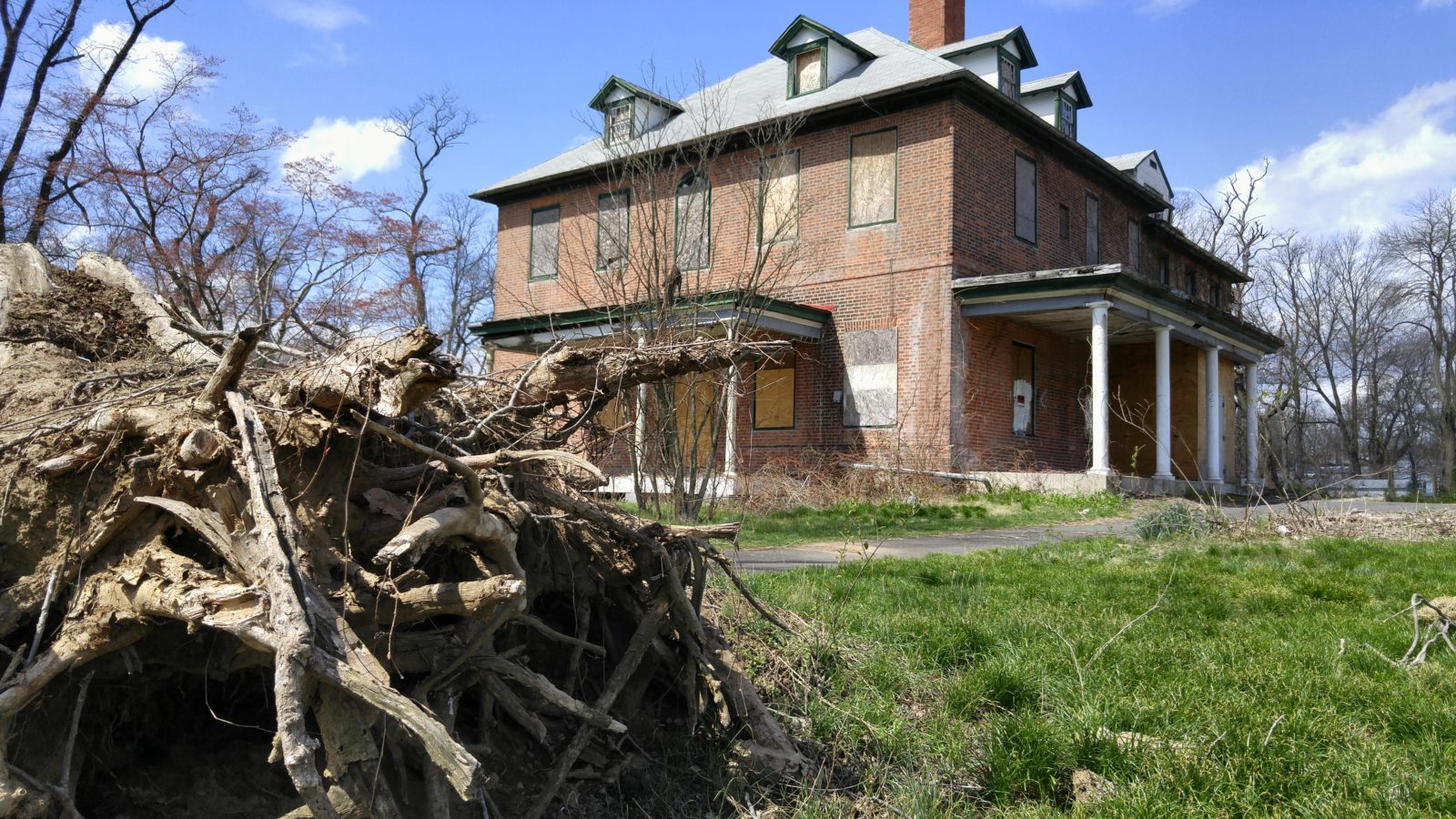The story behind Bensalem’s Croydon Lodge built by a British army major in 1763.
The first time I saw Croydon Lodge I couldn’t believe it. For years, I had traveled Gibson Road in Bensalem past the lodge, never knowing it was there. A tangle of trees, shrubs and vines hid the view. Then someone cleared the vegetation and the boarded up, two-story mansion emerged like a stark mirage. Skidding to a halt, I took a photo and texted it to my daughter in Bedminster. On both ends of the county we’re always on the lookout for “ghost houses” – long-abandoned homes of our Colonial and post-Colonial heritage. In this case, Genevieve replied, “Where is that? Wow!”
I had discovered a chestnut of ghost houses. To learn its story I visited the Bensalem Historical Society where Sally Sondesky pulled two file folders marked “Croydon Lodge”. The mansion was the life’s dream of Major Thomas Barnsley who arrived in New York in 1756 with Gen. Lord Loundon, commander-in-chief of the British Royal Army in North America. Barnsley served in the 60th Royal American Regiment of Foot in the French and Indian War. Trained in forest warfare, the 60th became one of the most valorous units by the time hostilities ceased in 1760.
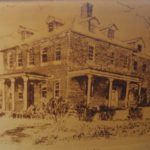
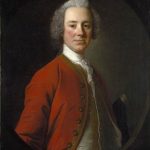
Returning to England, Barnsley retired and set sail for Philadelphia with wife Bersheba and nephew John Barnsley. His intention was to build a mansion like ones he had seen in Virginia made of red brick. While sailing upstream on tide waters of Neshaminy Creek, the major gazed upon a heavily-forested hilltop in Bensalem opposite the village of
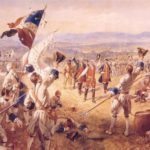
Newportville in Bristol Township. The major purchased the 537-acre site and got to work in 1763 on “Croydon Lodge”, named for his birthplace in England. He imported red brick made in his hometown for exterior walls that enclosed four rooms on the ground floor, six on the second floor and three attic rooms. High ceilings and many large windows added airiness. A black walnut staircase set off the grand entrance hall. Fireplaces were installed in every room, with rare blue tile enhancing a bedroom where George Washington was an overnight guest. A wing of the house included two large kitchens staffed by servants.
Half the acreage was cleared for pastures, a carpenter’s shop, smoke-house, spring house, flax and wool-house, two barns, a granary, a stable for 30 horses, a coach house and barracks. Elegant gardens, an orchard “of the best grafted fruit” and meadows leading down the hill to Newportville and the creek with its many boats entranced visitors. The major preferred wearing a scarlet coat, buff breeches, gold knee buckles, a cocked hat and dress sword – traditional dress of a retired Royal officer.
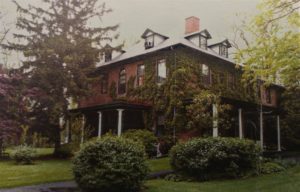
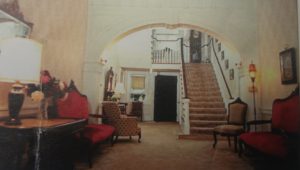
Barnsley died in 1771, just eight years after arriving. His wife succumbed a few years later, both interred in St. James Episcopal Church graveyard in Bristol.
With no children to inherit the estate, executors in 1772 sold it to John Swift. Proceeds were split four ways with relatives in England and nephew John Barnsley. He got his share in Continental currency which he failed to invest. In the American Revolution, Barnsley sided with the rebels and was at Washington’s side in the Battle of Princeton, driving a horse-drawn ammunition wagon along the lines to resupply Continental soldiers. After the war, his inheritance became worthless and he moved to Newtown to rebuild his life.
The Swift family maintained Croydon Lodge until 1882 when local physician Dr. Richard Dingee bought the property. The estate passed through generations of the doctor’s family which eventually sold most of the estate for retail and residential construction. The family in 2011 sold the remaining 6-acre site to a developer for offices in the main house plus single-family homes. After the deal was struck, the developer died. The boarded-up property became hidden by overgrowth – an invitation to vandals. Three struck in April 2013. They set the black walnut staircase afire, causing much internal damage before firefighters arrived. The suspects including a former firefighter were prosecuted.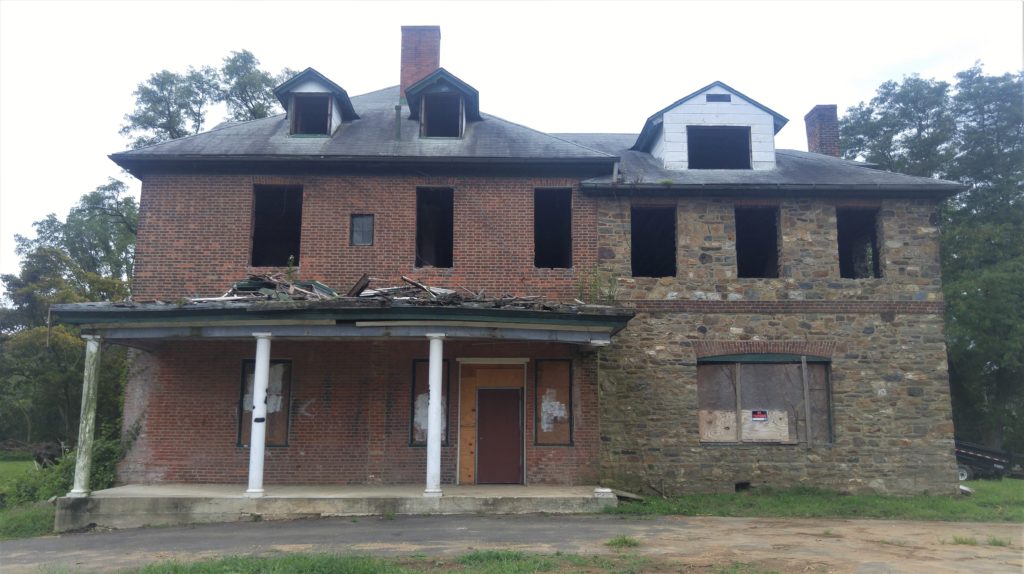
There is a silver lining to this story however.
Recently a couple purchased the side intent on making Croydon Lodge their home. Windows are being replaced and interior work is underway. That’s good news to Arlene Serafin of South Carolina. She grew up on the estate through the 1950s and ’60s and became an elementary school teacher at nearby Valley Elementary. Throughout that time, Croydon Lodge was owned by her grandparents Emma and Heston Bailey. “I had the most wonderful life growing up there,” she told me. “Picnics on the lawn, horseshoes and badminton. On Thanksgiving and Christmas there were 24 guests around the dinner table.”
Sources include Vol. 3 of “History of Bucks County Pennsylvania” by William W. H. Davis published in 1905; “The Bristol Pike” by Rev. S. F. Hotchkin, M.A. published ub 1893; and information on file at the Bensalem Historical Society.

